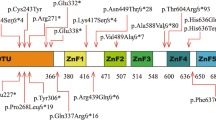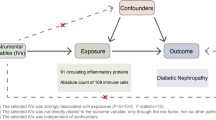Abstract
The butyrophilin-like 2 (BTNL2) gene is a member of the B7 receptor family that probably functions as a T cell costimulatory molecule. Because altered T cell functions are implicated in dysregulation of the immune response seen in Kawasaki disease (KD), it is reasonable to speculate that BTNL2 gene is involved in the pathophysiology of KD. The purpose of this study was to investigate whether polymorphisms of the BTNL2 gene are associated with KD and the development of coronary artery lesions (CALs) in Taiwanese children. Nine-three patients with KD and 669 ethnically matched healthy controls were genotyped for BTNL2 gene rs1555115 C/G and rs2395158 A/G polymorphisms. The frequency of GG genotype of rs 1555115 was significantly higher in KD patients compared with controls (2.2% vs 0.2%, P = 0.012). The odds ratio for developing KD in individuals with rs 1555115 GG genotype was 14.7 (95% confidence interval, 2.04–105.5, P = 0.003) compared with individuals with rs 1555115 CG and CC genotypes. No significant difference was observed in the genotype and allelic frequencies of rs 2395158 polymorphism between KD patients and controls. However, the frequency of the G allele of rs 2395158 was significantly higher in KD patients with CALs than in those without CALs (P = 0.001). No significant difference was observed in the genotype and allelic frequencies of rs 1555115 polymorphism between KD patients with and without CALs. In conclusion, our results suggest that BTNL2 gene polymorphisms might be genetic markers of KD susceptibility and risk of coronary artery complication in Taiwanese children.

Similar content being viewed by others
Abbreviations
- BTNL2:
-
Butyrophilin-like 2
- KD:
-
Kawasaki disease
- CALs:
-
Coronary artery lesions
- MHC:
-
Major histocompatibility complex
- HLA:
-
Human leukocyte antigen
- SNP:
-
Single nucleotide polymorphism
References
Barron KS, Silverman ED, Gonzales JC et al (1992) Major histocompatibility complex class II alleles in Kawasaki syndrome—lack of consistent correlation with disease or cardiac involvement. J Rheumatol 19:1790–1793
Brown TJ, Crawford SE, Cornwall ML et al (2001) CD8 T lymphocytes and macrophages infiltrate coronary artery aneurysms in acute Kawasaki disease. J Infect Dis 184:940–943
Burns JC, Glode MP (2004) Kawasaki syndrome. Lancet 364:533–544
Chang CC, Hawkins BR, Kao HK et al (1992) Human leucocyte antigens in southern Chinese with Kawasaki disease. Eur J Pediatr 151:866
Chang LY, Chang IS, Lu CY, Kawasaki Disease Research Group et al (2004) Epidemiologic features of Kawasaki disease in Taiwan, 1996–2002. Pediatrics 114:e678–e682
Choi J, Enis DR, Koh KP et al (2004) T lymphocyte–endothelial cell interactions. Annu Rev Immunol 22:683–709
Cunningham MW, Meissner HC, Heuser JS et al (1999) Anti-human cardiac myosin autoantibodies in Kawasaki syndrome. J Immunol 163:1060–1065
Danese S, Dejana E, Fiocchi C (2007) Immune regulation by microvascular endothelial cells: directing innate and adaptive immunity, coagulation, and inflammation. J Immunol 178:6017–6022
Fildes N, Burns JC, Newburger JW et al (2004) The HLA class II region and susceptibility to Kawasaki disease. Tissue Antigens 39:99–101
Furuno K, Yuge T, Kusuhara K et al (2004) CD25+CD4+ regulatory T cells in patients with Kawasaki disease. J Pediatr 145:385–390
Gardner-Medwin JM, Dolezalova P, Cummins C et al (2002) Incidence of Henoch–Schönlein purpura, Kawasaki disease, and rare vasculitides in children of different ethnic origins. Lancet 360:1197–1202
Hirao J, Sugita K (1998) Circulating CD4+CD8+ T lymphocytes in patients with Kawasaki disease. Clin Exp Immunol 111:397–401
Huang FY, Chang TY, Chen MR et al (2007) Genetic variations of HLA-DRB1 and susceptibility to Kawasaki disease in Taiwanese children. Hum Immunol 68:69–74
Hung SI, Chung WH, Liou LB et al (2005) HLA-B*5801 allele as a genetic marker for severe cutaneous adverse reactions caused by allopurinol. Proc Natl Acad Sci USA 102:4134–4139
Jason J, Gregg L, Han A et al (1997) Immunoregulatory changes in Kawasaki disease. Clin Immunol Immunopathol 84:296–306
Kaslow RA, Bailowitz A, Lin FY et al (1985) Association of epidemic Kawasaki syndrome with the HLA-A2, B44, Cw5 antigen combination. Arthritis Rheum 28:938–940
Kato H, Sugimura T, Akagi T et al (1996) Long-term consequences of Kawasaki disease: a 10- to 21-year follow-up study of 594 patients. Circulation 94:1379–1385
Kato S, Kimura M, Tsuji K et al (1978) HLA antigens in Kawasaki disease. Pediatrics 61:252–255
Kawasaki T (2001) Kawasaki disease: a new disease? Acta Paediatr Taiwan 42:8–10
Keren G, Danon YL, Orgad S et al (1982) HLA Bw51 is increased in mucocutaneous lymph node syndrome in Israeli patients. Tissue Antigens 20:144–146
Kimura J, Takada H, Nomura A et al (2004) Th1 and Th2 cytokine production is suppressed at the level of transcriptional regulation in Kawasaki disease. Clin Exp Immunol 137:444–449
Krensky AM, Berenberg W, Shanley K et al (1981) HLA antigens in mucocutaneous lymph node syndrome in New England. Pediatrics 67:741–743
Krensky AM, Grady S, Shanley KM et al (1983) Epidemic and endemic HLA-B and DR associations in mucocutaneous lymph node syndrome. Hum Immunol 6:75–77
Krinzman SJ, De Sanctis GT, Cernadas M et al (1996) Inhibition of T cell costimulation abrogates airway hyperresponsiveness in a murine model. J Clin Invest 98:2693–2699
Leung DY, Geha RS, Newburger JW et al (1986) Two monokines, interleukin 1 and tumor necrosis factor, render cultured vascular endothelial cells susceptible to lysis by antibodies circulating during Kawasaki syndrome. J Exp Med 164:1958–1972
Leung DY, Cotran RS, Kurt-Jones E et al (1989) Endothelial cell activation and high interleukin-1 secretion in the pathogenesis of acute Kawasaki disease. Lancet 2:1298–1302
Lin CY, Lin CC, Hwang B et al (1992) Serial changes of serum interleukin-6, interleukin-8, and tumor necrosis factor-α among patients with Kawasaki disease. J Pediatr 121:924–926
Maclaren N, Skordis N (1987) Is Kawasaki HLA associated? Prog Clin Biol Res 250:475–484
Matsubara T, Furukawa S, Yabuta K (1990) Serum levels of tumor necrosis factor, interleukin 2 receptor, and interferon-γ in Kawasaki disease involved coronary-artery lesions. Clin Immunol Immunopathol 56:29–36
Matsuda I, Hattori S, Nagata N et al (1977) HLA antigens in mucocutaneous lymph node syndrome. Am J Dis Child 131:1417–1418
Nguyen T, Liu XK, Zhang Y et al (2006) BTNL2, a butyrophilin-like molecule that functions to inhibit T cell activation. J Immunol 176:7354–7360
Research Committee on Kawasaki Disease (1984) Report of Subcommittee on Standardization of Diagnostic Criteria and Reporting of Coronary Artery Lesions in Kawasaki Disease. Ministry of Health and Welfare of Japan, Tokyo
Rybicki BA, Walewski JL, Maliarik MJ et al (2005) TheBTNL2 gene and sarcoidosis susceptibility in African Americans and Whites. Am J Hum Genet 77:491–499
Schiller B, Elinder G (1999) Inflammatory parameters and soluble cell adhesion molecules in Swedish children with Kawasaki disease: relationship to cardiac lesions and intravenous immunoglobulin treatment. Acta Paediatr 88:844–848
Shahinian A, Pfeffer K, Lee KP et al (1993) Differential T cell costimulatory requirements in CD28-deficient mice. Science 261:609–612
Sharpe AH, Freeman GJ (2002) The B7-CD28 superfamily. Nat Rev Immunol 2:116–126
Sherry ST, Ward MH, Kholodov M et al (2001) dbSNP: the NCBI database of genetic variation. Nucleic Acids Res 29:308–311
Sherry ST, Ward M, Sirotkin K (2000) Use of molecular variation in the NCBI dbSNP database. Hum Mutat 15:68–75
Stammers M, Rowen L, Rhodes D et al (2000) BTL-II: a polymorphic locus with homology to the butyrophilin gene family, located at the border of the major histocompatibility complex class II and class III regions in human and mouse. Immunogenetics 51:373–382
Valentonyte R, Hampe J, Huse K et al (2005) Sarcoidosis is associated with a truncating splice site mutation in BTNL2. Nat Genet 37:357–364
Wang CL, Wu YT, Liu CA et al (2005) Kawasaki disease: infection, immunity and genetics. Pediatr Infect Dis J 24:998–1004
Yadav D, Khuller G (2001) Evaluation of the T cells and costimulatory molecules in the protective efficacy of 30 kDa secretory protein against experimental tuberculosis. Immunol Cell Biol 79:207–212
Acknowledgments
This work was supported by the China Medical University (CMU95-142) and the China Medical University Hospital (DMR-91-003).
Author information
Authors and Affiliations
Corresponding author
Rights and permissions
About this article
Cite this article
Hsueh, KC., Lin, YJ., Chang, JS. et al. BTNL2 gene polymorphisms may be associated with susceptibility to Kawasaki disease and formation of coronary artery lesions in Taiwanese children. Eur J Pediatr 169, 713–719 (2010). https://doi.org/10.1007/s00431-009-1099-5
Received:
Accepted:
Published:
Issue Date:
DOI: https://doi.org/10.1007/s00431-009-1099-5




